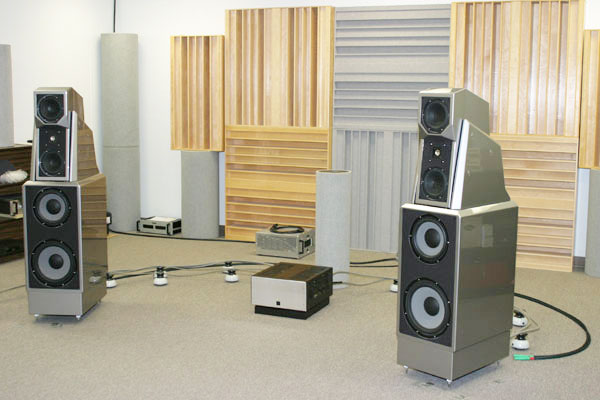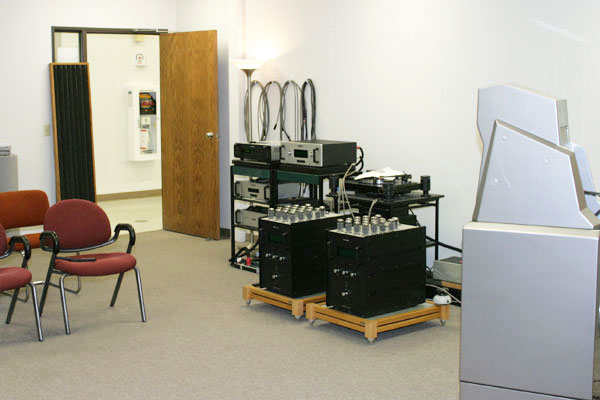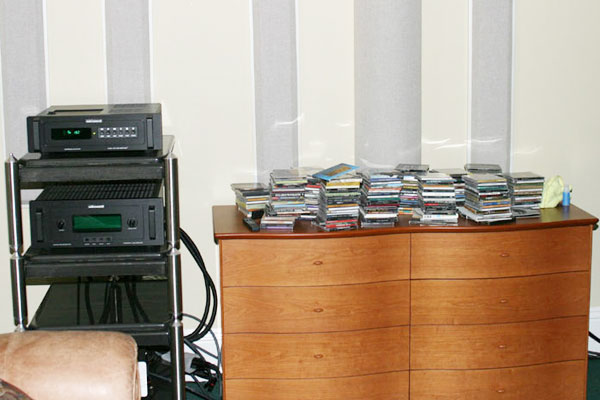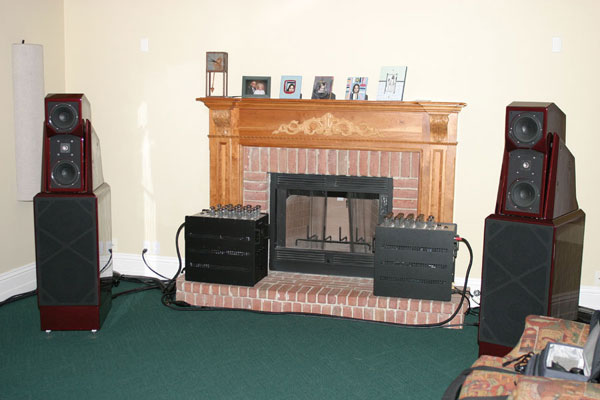![[SoundStage!]](../sslogo3.gif) Config.Sys Config.SysBack-Issue Article |
||||
August 2007 Reference System x 3 = Hi-Fi2
I admire audiophiles who slowly, carefully hunt for equipment they love and then use it until it's unable to make music any longer. These are earnest people who would rather tweak an older amp or CD player to squeeze the last ounce of fidelity out of it than throw money at the issue by upgrading. Music matters to them, so building an audio system is only a means to an end, not the end itself. I admire these audiophiles because my own system is so different from theirs -- in a state of nearly constant flux. This is the way it is when you write about audio equipment. Your reference system is the equivalent of a handyman's truck loaded with tools: a collection of needed implements with which to ply your trade. A new preamp or speaker is always in use or waiting in the wings; meanwhile, my preamp and speakers sit dormant. They are literally off to the side gathering dust. Owning a reference audio system isn't only vital for members of the audio press, however. Audio companies and the people who work for them also need reference systems to test the products they make or evaluate them for use at shows. Some companies rely almost solely on one or two others to provide them with products to use with their own. Speaker makers choose particular brands of electronics for in-house testing, and electronics makers use speakers they know well in order to hear what that new amp or preamp really sounds like. Two such companies are Audio Research Corporation and Wilson Audio. Visit either and you will see the other's products in liberal use. I've heard four or five different pairs of Wilson Audio speakers while visiting Audio Research; likewise, Audio Research amps, preamps and CD players are used at the Wilson Audio factory, in David Wilson's impressive system, and in marketing director John Giolas's system. On my most recent visits to both companies, I saw -- and heard -- just how closely each uses the other's products for both R&D and recreational listening. I've spent a number of hours listening in Audio Research's two demo rooms. The smaller one is Warren Gehl's lab, where he evaluates every piece of Audio Research gear before it leaves the factory. Here, there is a pair of Wilson Audio WATT/Puppy 8s, which supplanted a pair of WATT/Puppy 7s. The other room is the larger of the two -- 29' 4 1/2" long and 22' 2 1/2" wide with a 9' ceiling -- and it's here that the big rig resides. On the day of my visit, Wilson MAXX 2s were connected to a full Audio Research Reference setup: Reference 3 preamp ($9995), Reference CD7 CD player ($8995), and the brand-new Reference 110 stereo amp ($9995).
Audio Research uses this room for testing, hosting dealers and distributors, and placating pesky audio press. I've heard various speakers here, all from Wilson Audio, but none has been as impressive as the MAXX 2s, which love the space that's afforded to them in this room. During my last visit, I played a few cuts from a demo CD-R that I had made specifically for the trip. They sounded all wrong -- indistinct, hard and muddled. I first thought that something was seriously wrong with the system, but then Dave Gordon of Audio Research played a Buddy Holly CD, From the Original Master Tapes [MCA Records MCAD-5540], which was mastered by Steve Hoffman. Nothing wrong there. The first word I uttered after "True Love Ways" ended was "Wow!" The recording sounded thoroughly contemporary, even though it was produced 50 years earlier. The resolution of the system seemed limitless, but the silky flow of the music dominated, eliciting that "Wow!" But what the heck was going on with my CD-R? I figured it out when I returned home. I had burned the disc on a new laptop with new software that I hadn't configured correctly. The CD-R was the musical equivalent of crippleware -- where full functionality (or full resolution in this case) has been disabled. Audio Research's reference system made the issue obvious. Months passed, and then I made a trip to Wilson Audio, during which I heard marketing director John Giolas's reference system, which is housed in a room connected to his kitchen. Talk about sharing your audio system with your family -- it could be no other way here. Again, MAXX 2s were the speakers (in lusty Carmen red) and the electronics were from Audio Research: Reference 610T mono amps ($39,990 per pair), a Reference 3 preamp, and a Reference CD7 CD player.
This room is much smaller than Audio Research's -- 16' wide by 18' long with an 8' ceiling -- but the resolving power of the system was just as high, as was its musical skill. I had heard John's system years earlier and marveled at the ability of the big MAXX 2s to disappear sonically, especially with a mono Bob Dylan cut. This time, I listened to unfamiliar music from a seat behind the sweet spot, and the speakers had departed the premises again.
When I returned home from Utah, I was finishing my review of the WATT/Puppy 8s, which meant that the MAXX 2s would soon be part of my system again. Because of other writing assignments, the speakers had been tucked away in a bedroom for more than a year. I had marked their positions with masking tape, but without some help I wouldn't be able to swap the speakers' casters for spikes. I still had the Reference 110 amp I had reviewed a short time earlier, along with the Reference 3 and Reference CD7 I own. Once the speakers were in place I'd be able to listen to the exact system I heard at Audio Research and almost the same system I heard at John Giolas's. The results were identical -- exquisite retrieval of anything embedded into the pits of the CDs I played combined with the natural, unforced flow of live music. I pulled out the CD-R I had played at Audio Research, and it sounded just as confused. I would be taking the easy way out if I simply chalked up what I had heard from the three Audio Research-Wilson Audio systems to synergy -- the sonic teamwork of electronics and speakers. That's certainly evident, but there's more to this sound -- what high-end audio is capable of right now -- than that. It's the sum of an uncompromising approach to designing and manufacturing audio components that includes each company's use of the other's products. Call it hi-fi2 -- a relationship in which one company brings out the best in the other, the highest performance begetting more of the same. You'll search for other words when you hear it yourself. ...Marc Mickelson |
||||
|
||||
![[SoundStage!]](../sslogo3.gif) All Contents All ContentsCopyright © 2007 SoundStage! All Rights Reserved |



